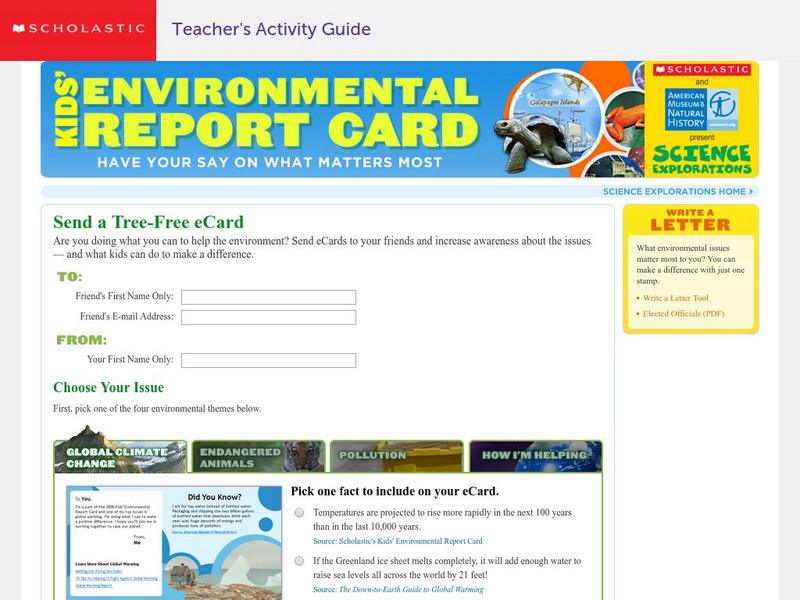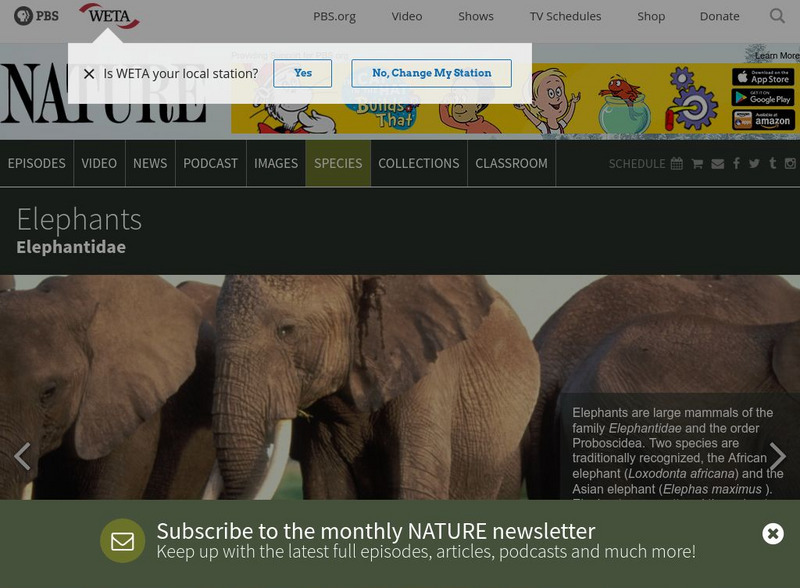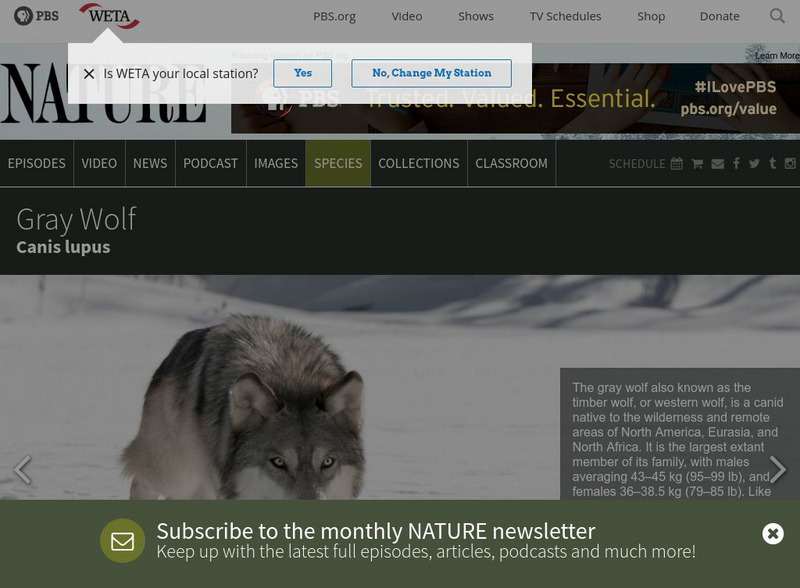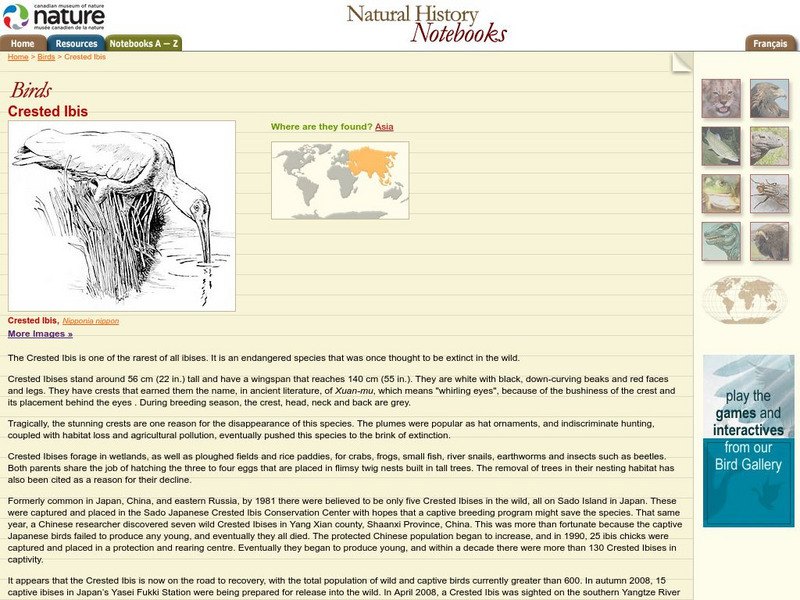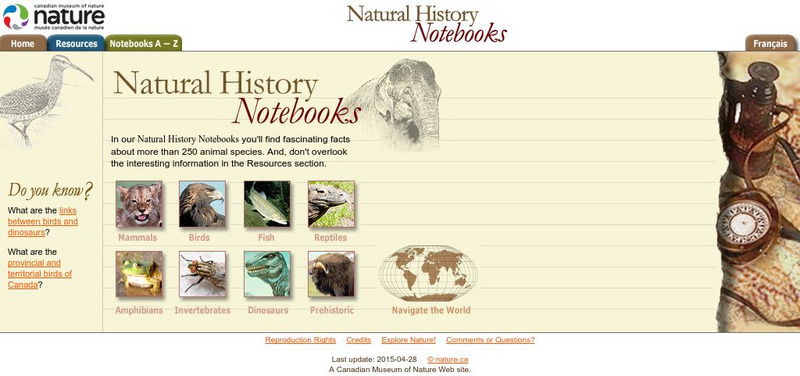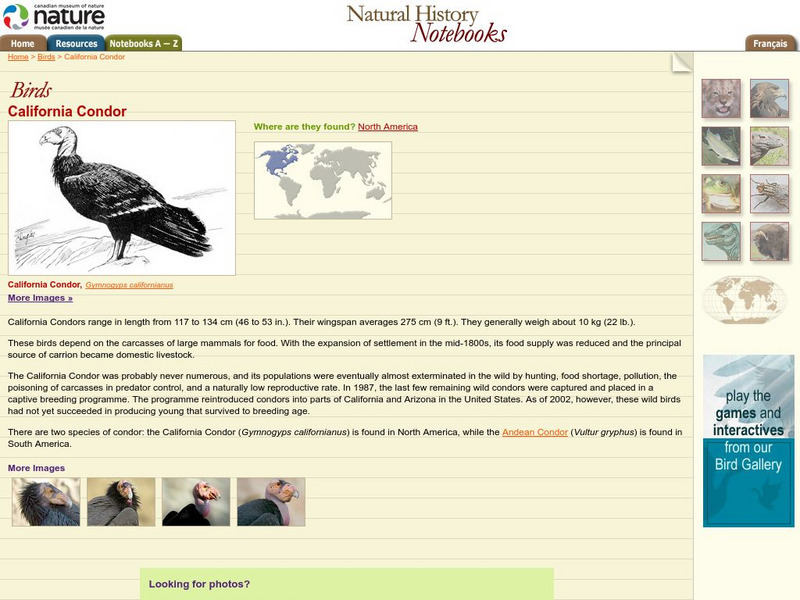Hi, what do you want to do?
San Diego Zoo Global
San Diego Zoo: Kids: African Penguin
Colorful resource for learning fun facts about African penguins with photographs as well as information regarding their physical characteristics and unique features.
San Diego Zoo Global
San Diego Zoo: Kids: Tasmanian Devil
Colorful resource for learning fun facts about Tasmanian devils with photographs as well as information regarding their physical characteristics and unique features.
Environmental Education for Kids
Eek!: Species With Status: Threatened
A threatened species is an official designation for a species that is likely to become endangered in the foreseeable future throughout all or a significant portion of its range. Some examples of threatened species in Wisconsin are...
Environmental Education for Kids
Eek!: Species With Status
Learn about the different status designations for animal and plant species. Explains what is meant by Endangered, Threatened, Special Concern, Alien Invaders, Locally Common, Common but Declining, Common, Abundant, Uncommon, and...
Khan Academy
Khan Academy: Life Tables, Survivorship, & Age Sex Structure
This article describes tools ecologists use to describe the present state of a population and predict its future growth.
Scholastic
Scholastic: Science Explorations: Kids' Environment Report Card
Cast your vote on the important environmental issues. Associated with each issue, there are at least three links to sites which can further your understanding of the issue. To encourage others to respect the environment, you can also...
Other
Planet Ark: World Environmental News
Welcome to Planet Ark's daily Reuters World Environment News - the most comprehensive source of environmental news on the Net. To read previous news stories, please use the search engine below to find stories relating to any...
PBS
Nature: Cheetah
What are some of the cheetah's distinctive characteristics? Come and check out this resource featuring fun facts and information about the cheetah.
PBS
Pbs Nature: Elephants
Did you know that the elephant is the largest animal in the world? Discover more about where they live, what they eat and how they socialize when you visit this site.
PBS
Pbs Nature: Gray Wolf
Gray wolves were a frequent sight on the American plains, however, they are now an endangered species despite attempts to reintroduce them to their former habitats in the continental United States. Learn about their natural history in...
Canadian Museum of Nature
Canadian Museum of Nature: Piping Plover
The piping plover is on the list of endangered species, largely due to loss of its beach habitat. Here are some facts about this bird along with drawings and photos.
Canadian Museum of Nature
Canadian Museum of Nature: Crested Ibis
The crested ibis was barely saved from extinction in Asia after the last seven known to be alive were put into a protective sanctuary in China. The population has increased and many have been released back into the wild but it is still...
Canadian Museum of Nature
Canadian Museum of Nature: Galapagos Land Inguana
Today, very few of the Galapagos land iguanas exist. Described are their characteristics, food, and reproduction. Eight photographs show this iguana close up in its habitat.
Canadian Museum of Nature
Canadian Museum of Nature: Natural History Notebooks
This site from the Canadian Museum of Nature, a natural history museum, provides short information blurbs and fun facts on over 240 different common animals categorized by type (mammals, fish, reptiles, invertebrates, amphibians,...
Canadian Museum of Nature
Canadian Museum of Nature: Jaguar
The Canadian Museum presents a beautifully illustrated image of a jaguar, followed by a brief descriptive text.
NOAA
Noaa: Ocean Facts on Marine Mammals
The National Oceanic & Atmospheric Administration sponsors this introductory article and related links that tell why marine mammals are valued by the public for their great aesthetic, recreational and economic significance.
McGraw Hill
Mc Graw Hill Ryerson: Human Impacts on Ecosystems
Take this ten question quiz on human impacts on ecosystems. The quiz is multiple choice.
PBS
Pbs Learning Media: Now You See It
Students are asked to identify ways to help these endangered or threatened species.
PBS
Nh Pbs: Nature Works: Sage Grouse
Learn more about the Sage Grouse through this clear and concise resource. Students will find information on the characteristics, life cycle, diet, habitat, behavior and range of this type of running bird.
CNN
Cnn: Wolves Get Help to Make a Comeback in the West
CNN news story about the efforts to reintroduce wolves into the wilds of America.
Text Project
Text Project: Fyi for Kids: Counting Endangered Animals [Pdf]
This FYI for Kids (Volume 5, Issue 2) article focuses on counting endangered animals including how they count them and why. It uses two examples of the use of modern technology to count endangered animals: panthers and humpback whales.
Canadian Museum of Nature
Canadian Museum of Nature: California Condor
There are very few California condors left and the ones that are able to reproduce are in captivity as efforts are made to build up their population. The reasons for their decline are explained here and you can see some pictures of them.
Kidport
Some Animals Live in Rock Caves
This site has brief illustrations and sample locations as to where the tiger, the bear, the moray eel and bat live.
NPR: National Public Radio
Npr: Sanctuary for Fast Cats
The number of cheetahs in the African wilderness has dwindled dramatically in the last 20 years. Find out what is being done in the United States to ensure the survival of this species.







